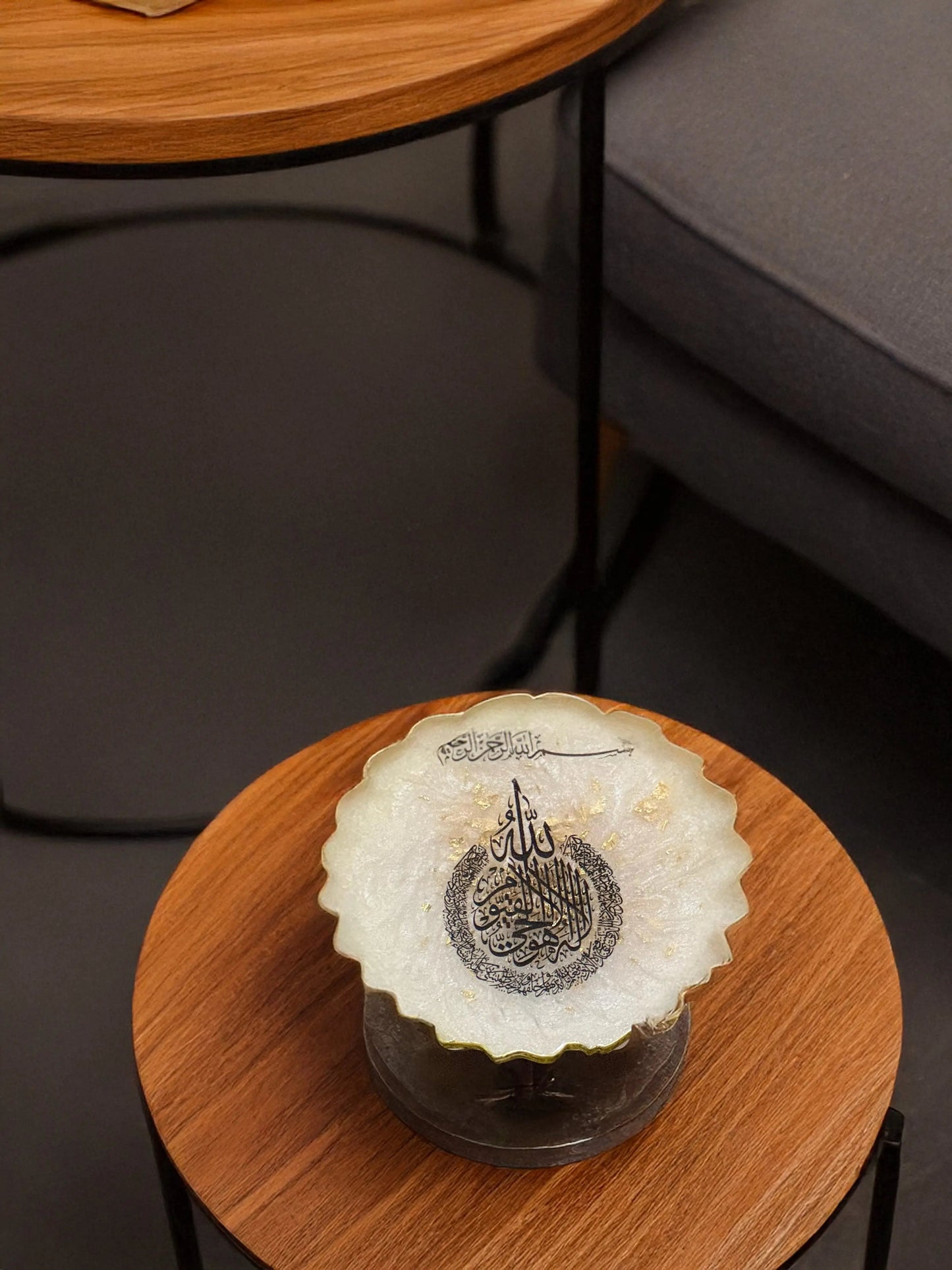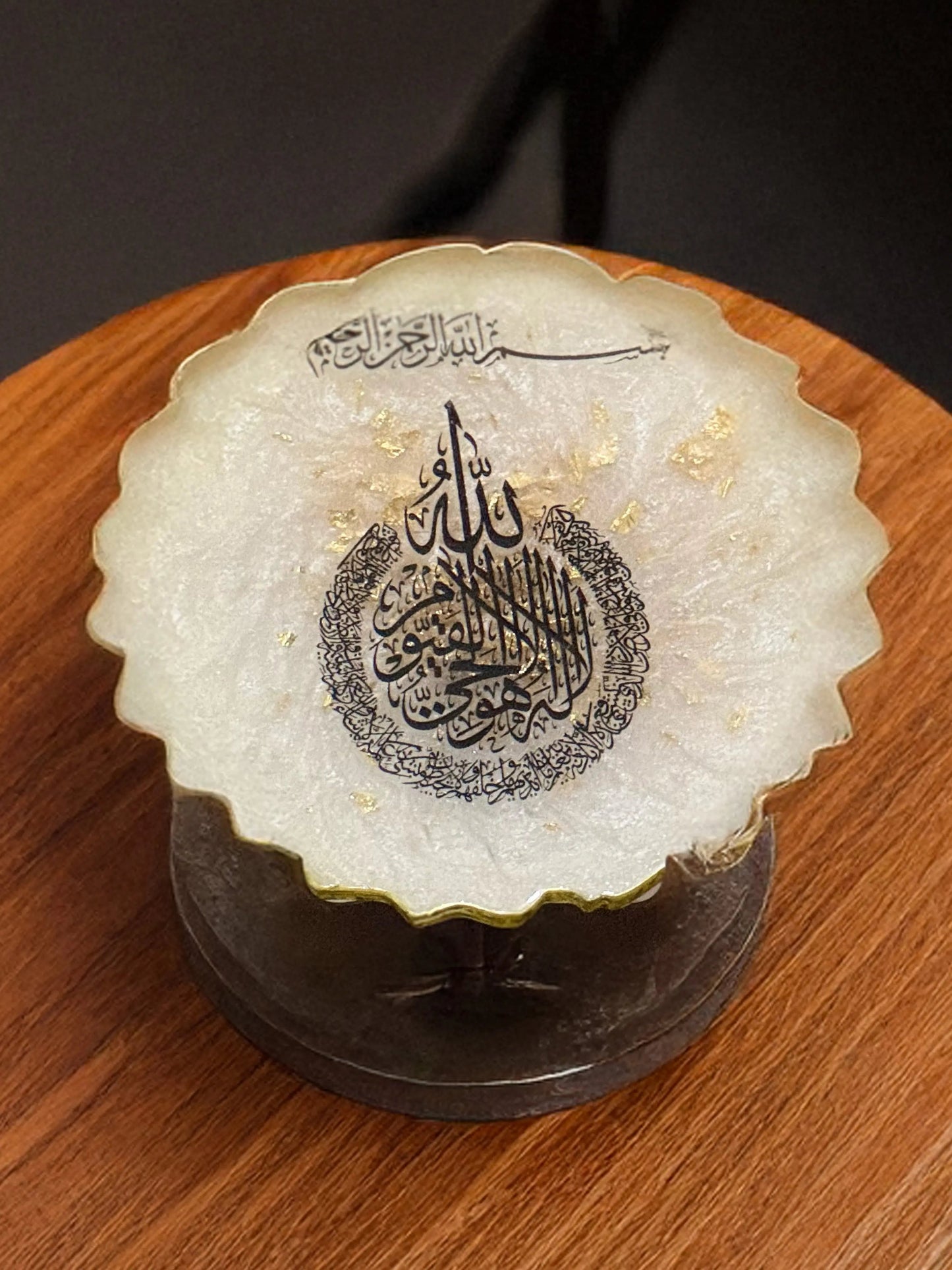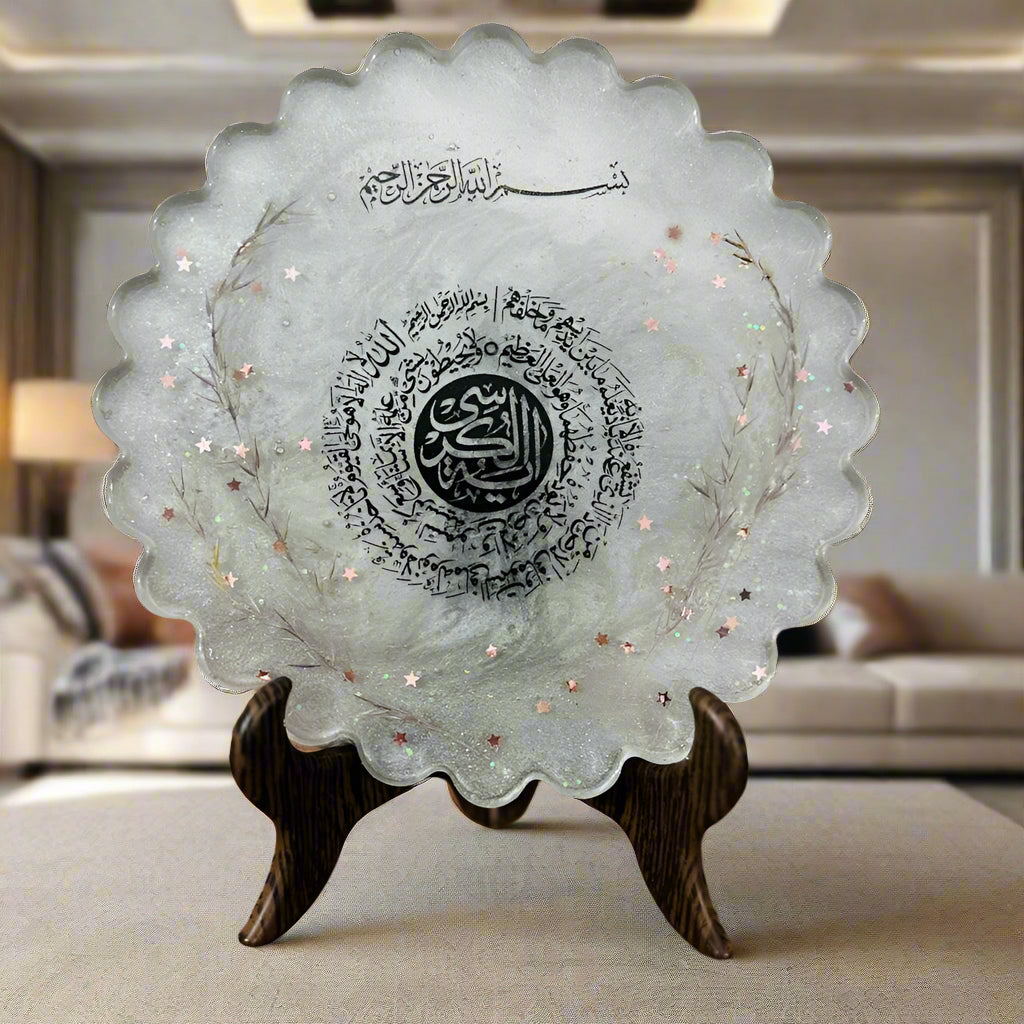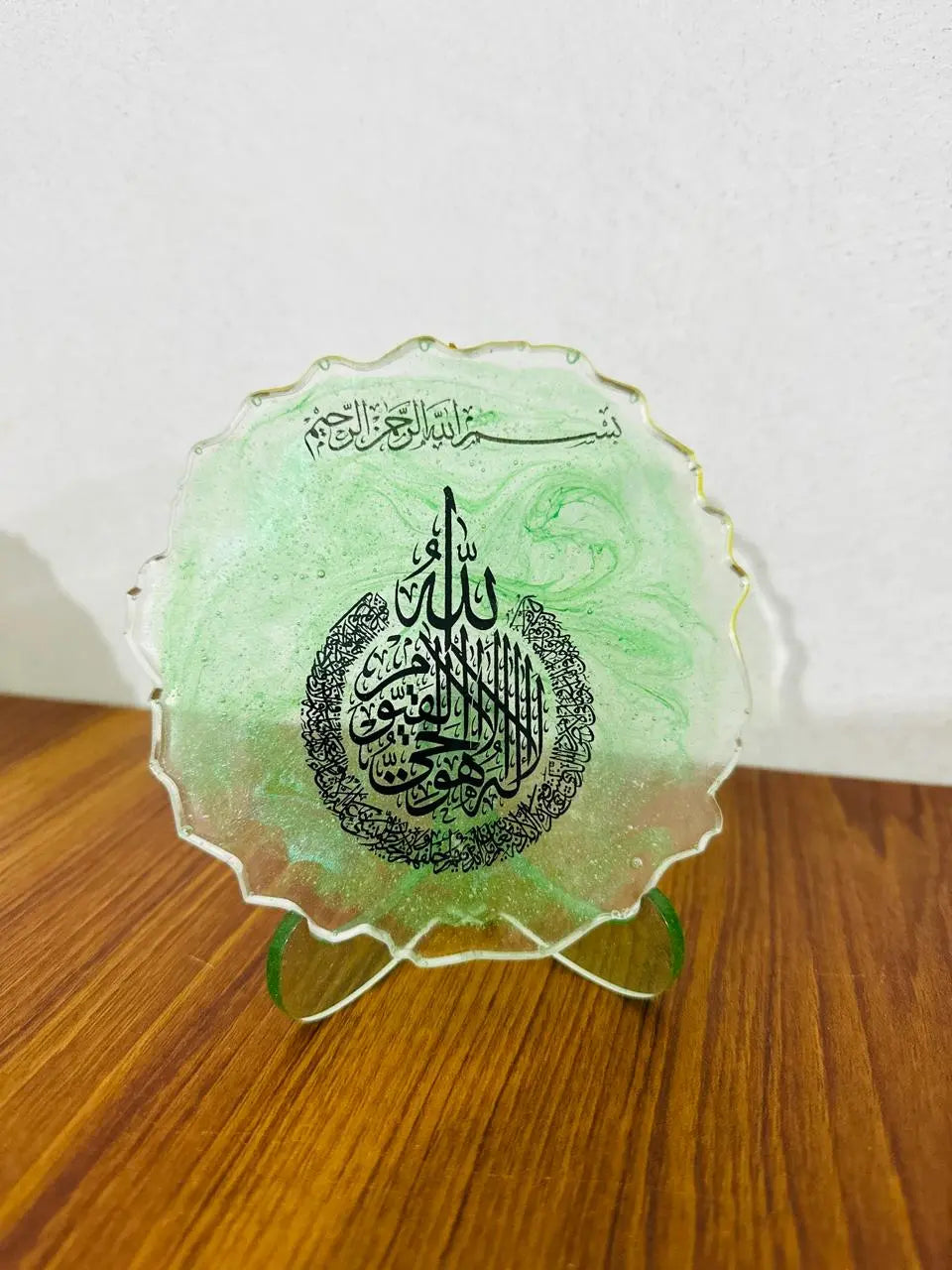Resin Art by Mishaals
Islamic ART
Islamic ART
Couldn't load pickup availability
Exploring Islamic Artwork: A Cultural Legacy
Discover the rich and intricate beauty of Islamic art with our collection. Featuring exquisite calligraphy, geometric patterns, and vibrant colors, each piece is a treasure of cultural heritage and a testament to the skilled craftsmanship of Islamic artists. Enhance your space with the elegance and history of ISLAMIC ART.
A Unique Cultural Heritage
Islamic artwork is a vibrant representation of the rich history and diverse cultures within the Islamic world. This art form is not just about aesthetics, but also reflects deep spiritual and philosophical ideas. Artists often integrate intricate geometric patterns, calligraphy, and floral motifs into their work, resulting in pieces that are both beautiful and meaningful. Because of this, Islamic artwork has become a symbol of cultural identity and heritage for many.
The Role of Geometry in Islamic Art
Geometric patterns play a crucial role in Islamic artwork and are often used to symbolize the infinite nature of creation. Artists carefully design intricate layouts using shapes like stars, circles, and squares. However, these patterns are not just decorative; they also represent mathematical precision and knowledge. As a result, geometric designs are timeless and continue to inspire new generations of artists today.
The Art of Calligraphy
Calligraphy in Islamic art is more than just writing; it is a revered art form. Artists skillfully transform words from the Quran and other texts into stunning visual masterpieces. By using various scripts, like Arabic and Persian, they elevate the written word to an art form that commands attention and respect. Therefore, calligraphy not only beautifies spaces but also conveys messages that are often spiritual or historical, making it a significant aspect of Islamic culture.

The Essence of Islamic Artwork
Islamic artwork is a beautiful reflection of the rich cultural and religious heritage of Islamic societies. It encompasses various forms such as calligraphy, geometric patterns, and intricate tile work. The artwork often carries profound meanings, embodying spiritual themes and conveying messages of unity and diversity. Additionally, Islamic artwork avoids depictions of living beings, focusing instead on abstract shapes and designs. This unique style not only showcases the artistry but also respects the cultural preferences within the Islamic faith.
Techniques and Materials Used
Artisans of Islamic artwork utilize a variety of techniques and materials to create their masterpieces. Traditional methods include hand-painting, engraving, and tile-laying, showcasing exquisite craftsmanship. Artists often use vibrant colors and complex patterns, which are integral to Islamic aesthetics. So, whether it is ceramic tiles or woodwork, the materials chosen play a significant role in the overall beauty of the artwork. This meticulous attention to detail elevates Islamic art, making it both timeless and captivating.
The Influence of Islamic Artwork on Modern Art
Islamic artwork has profoundly influenced contemporary artists worldwide. Many modern artists draw inspiration from the intricate designs and cultural narratives found in traditional Islamic pieces. They incorporate geometric patterns and calligraphic elements into their works, bridging the gap between history and modernity. Because of this, Islamic artwork continues to thrive, intertwining historical significance with contemporary expression. As a result, it not only preserves history but also inspires innovation in the art community today.
The Essence of Islamic Artwork
Islamic artwork is a beautiful reflection of the rich cultural and religious heritage of Islamic societies. It encompasses various forms such as calligraphy, geometric patterns, and intricate tile work. The artwork often carries profound meanings, embodying spiritual themes and conveying messages of unity and diversity. Additionally, Islamic artwork avoids depictions of living beings, focusing instead on abstract shapes and designs. This unique style not only showcases the artistry but also respects the cultural preferences within the Islamic faith.
Techniques and Materials Used
Artisans of Islamic artwork utilize a variety of techniques and materials to create their masterpieces. Traditional methods include hand-painting, engraving, and tile-laying, showcasing exquisite craftsmanship. Artists often use vibrant colors and complex patterns, which are integral to Islamic aesthetics. So, whether it is ceramic tiles or woodwork, the materials chosen play a significant role in the overall beauty of the artwork. This meticulous attention to detail elevates Islamic art, making it both timeless and captivating.
The Influence of Islamic Artwork on Modern Art
Islamic artwork has profoundly influenced contemporary artists worldwide. Many modern artists draw inspiration from the intricate designs and cultural narratives found in traditional Islamic pieces. They incorporate geometric patterns and calligraphic elements into their works, bridging the gap between history and modernity. Because of this, Islamic artwork continues to thrive, intertwining historical significance with contemporary expression. As a result, it not only preserves history but also inspires innovation in the art community today.
Share








